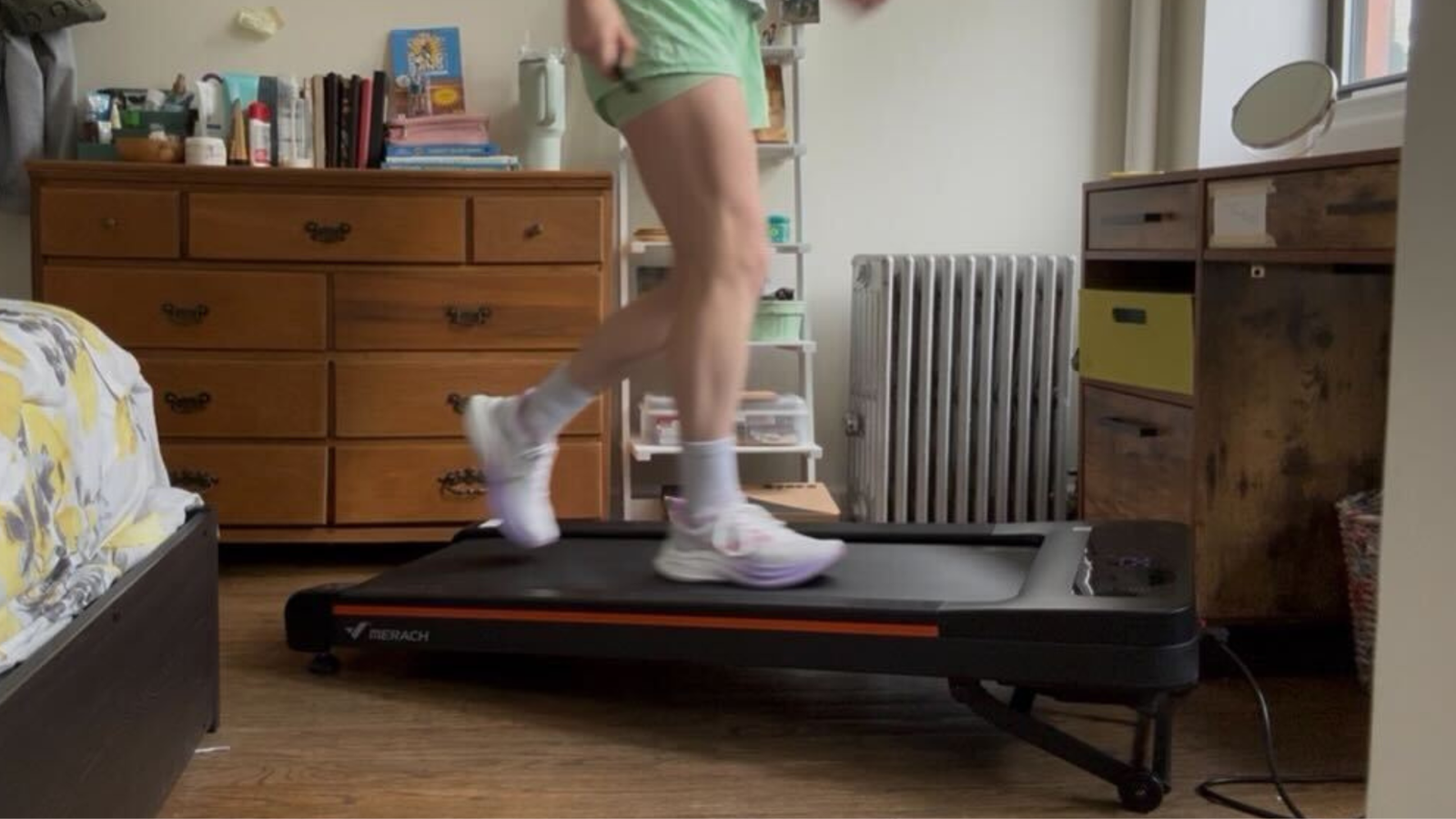We may earn a commission from links on this page.
When walking pads started getting trendy, I’ll admit I felt ambivalent. For those unfamiliar, a walking pad is essentially a slim, ideally foldable treadmill designed specifically for walking. Unlike traditional treadmills, they’re compact enough to slide under a bed or lean against a wall, and most top out around 4-6 mph—perfect for walking, not running. They exploded in popularity over the past few years, as more people work from home and look for convenient ways to stay active.
As someone who’s completed twelve marathons and logged thousands of miles on everything from mountain trails to city streets, I felt the idea of walking in place on a compact treadmill simply didn’t apply to me. But after a few months of regular use—specifically with the Merach W50, which I review here—I’ve developed some stronger opinions about walking pads.
Best reasons to get a walking pad
Here’s what I’ve grown to really appreciate about having a walking pad in my apartment.
-
The recovery game-changer: The biggest revelation for me has been using the walking pad for active recovery. After long runs or intense training sessions, I used to either sit completely still (which left me feeling stiff) or force myself out for another walk when my legs were screaming. The walking pad offers the perfect middle ground. I can maintain a gentle 2.5 mph pace while watching Netflix, helping my legs recover without the commitment of getting dressed and heading outside.
-
Rainy day relief: Living in Brooklyn, I’ve experienced my share of brutal winter and summer training seasons. While I still run outside in most conditions (it’s part of the mental toughness training), having the walking pad means I never have to skip movement entirely. On days when heat makes outdoor activity genuinely dangerous, or when I’m dealing with minor injuries that preclude running but allow walking, it’s been invaluable.
-
Multitasking magic: This one applies to non-runners too: I love being able to walk while doing other things. I’ve incorporated light walking into my daily Duolingo practice, and my streak has never been higher. Muy bueno. When I stick to just 1-1.5mph, I’ve even done some light stretching routines while walking at an easy pace. It’s transformed previously sedentary activities into opportunities for light movement.
-
Form analysis: One unexpected benefit has been the ability to work on my walking form in a controlled environment. The consistent pace and flat surface make it easy to focus on posture, arm swing, and foot strike without worrying about terrain or traffic. My hope is these improvements can actually translate to better running form during my easy recovery jogs.
The cons for walking pads
Here’s what I’d consider more closely before spending hundreds of dollars on a walking pad.
-
The noise factor: Despite marketing claims about “whisper-quiet” operation, walking pads do make noise. The motor hums, the belt creates a subtle whooshing sound, and if you’re not perfectly centered, there’s an occasional thump. If you live in an apartment or have family members working from home, this can be a real issue. I wouldn’t use mine when my downstairs neighbors are trying to sleep.
-
Belt size compromises: Most walking pads have narrower and shorter belts than traditional treadmills. At 5’6″, I don’t feel too constrained, but I couldn’t imagine being 6’2″ and logging much time on a walking pad. The shorter length means you can’t fully extend your natural stride, and the narrow width requires more attention to foot placement than I’d prefer. It’s manageable, just not ideal for extended use.
-
The boredom factor: Here’s where I might lose some of you: Walking in place, even while watching TV or listening to podcasts, can be mind-numbing in a way that outdoor walking never is. There’s something about the lack of changing scenery and the mechanical nature of the movement that my runner’s brain rebels against. Some days, I’d rather walk outside in light rain than spend 45 minutes on the walking pad. Similarly, while the 4 mph top speed is fine for walking, it is a stark reminder that this is not a treadmill. If I suddenly find the motivation to break into a run, it doesn’t matter—I’m stuck walking.
-
Storage concerns: As I explain in my review here, a more durable walking pads means a trade-off in storage. My Merach W50 doesn’t fold, and at over 6 inches tall it doesn’t easily slide under any of my furniture. Unless you want to give your walking pad dedicated floor space at all times, make sure you shop for one with strong reviews for storage.
The bottom line
Walking pads are rock solid for specific use cases. They’re perfect for people with limited mobility, those in harsh climates, remote workers looking to add movement to their day, or anyone rehabbing from injury. For runners, they’re excellent supplementary tools for recovery and inclement weather backup.
My walking pad has proved worthwhile for me. Would I buy one again? Probably. Would I recommend one to every runner? Definitely not. If you’re looking for a primary cardio solution or hoping to replicate the experience of outdoor walking, you might be disappointed. They’re tools, not replacements for real movement in the real world.
This articles is written by : Nermeen Nabil Khear Abdelmalak
All rights reserved to : USAGOLDMIES . www.usagoldmines.com
You can Enjoy surfing our website categories and read more content in many fields you may like .
Why USAGoldMines ?
USAGoldMines is a comprehensive website offering the latest in financial, crypto, and technical news. With specialized sections for each category, it provides readers with up-to-date market insights, investment trends, and technological advancements, making it a valuable resource for investors and enthusiasts in the fast-paced financial world.

